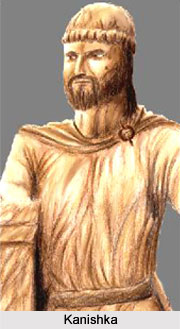 The Saka Era is the most important of all the historical eras. The Kushanas introduced the Saka Kala in ancient India. This wonderful continuity of the era came to be used first in Ujjaini, the core of astronomical studies in ancient India during the reign of the Saka satraps. The Saka era spread to the southern region under the influence of the Jains. The Jains in ancient India concentrated in the region of Gujarat, where the theme of Saka era originally predominated. When the Jains migrated to southern India, they circulated the popularity of the era and the period earned much reputation in south India.
The Saka Era is the most important of all the historical eras. The Kushanas introduced the Saka Kala in ancient India. This wonderful continuity of the era came to be used first in Ujjaini, the core of astronomical studies in ancient India during the reign of the Saka satraps. The Saka era spread to the southern region under the influence of the Jains. The Jains in ancient India concentrated in the region of Gujarat, where the theme of Saka era originally predominated. When the Jains migrated to southern India, they circulated the popularity of the era and the period earned much reputation in south India.
The origin of the Saka era till date is veiled in obscurity. Historians have endeavoured several researches about the beginning of the Saka era in ancient India. They have approached several theories in regard to this. According to some historians, the Saka rulers introduced the system of the Saka time period in order to commemorate their ascension to the throne. While other historians pointed out that the Saka rulers counted the years continuously from the reign of the particular Saka king and this reckoning ultimately came to be known as Saka kala or Sakabda. Later Fergusson approached a theory which is well researched and also widely accepted. Fergusson puts forward that the first year of the Kanishka era corresponds to 78 A.D. of the Christian era. The Saka Satraps of Western India also used the era founded by their Kushana overlord. The long and continued use of the Kanishka era by the Saka Satraps and their successors led to the naming of the era as Saka era or Sakabda. The period time gained popularity due to its association with Ujjaini, the famous centre of astronomical studies in ancient India.
It has been agreed unanimously by the scholars that the Saka Era was counted from the time of Kanishka I in 78 A.D. Later modern historians have pointed out some defects in the theory approached by Fergusson. According to them, Kanishka was the ruler of northern India and the Saka era was popularised in south India. In that case it cannot be possible for Kanishka to introduce Sakabda, more popular in the southern parts of India. Moreover they have also pointed out that the Saka era was associated with the name of the Saka Satraps and did not have any connection with the Kushanas. But since this argument did not have any supported facts behind, it was refuted by most. Thus it was generally held that Kanishka introduced the Saka era from 78 A.D.



















